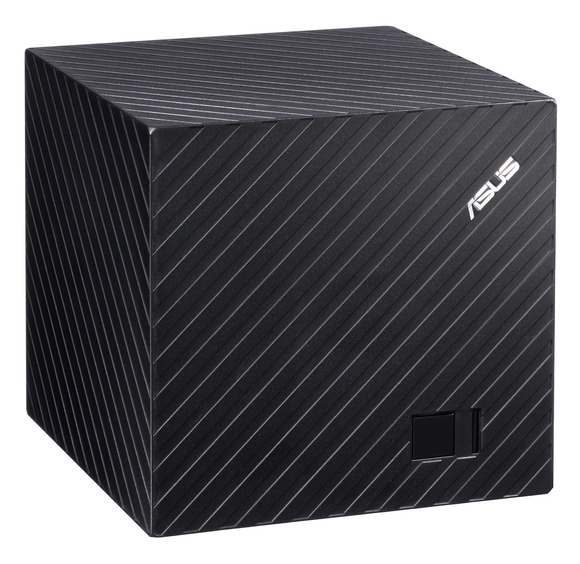The Consumer Electronics Show may have faded from its former glory, but it still offers a remarkable snapshot in time of embedded CE technology. The big smartphone vendors largely took a pass on CES, but plenty of second-tier vendors and Kickstarter projects were on hand with compelling offerings. Although many products floated here will never even reach market — often, what happens in Vegas does indeed stay in Vegas — a few may change your life.
Here we look at six major CES stories involving Linux or Android that you are not likely to forget by the time CES 2014 rolls around. (3D TV, anyone?) The list omits a host of other intriguing Linux-based products shown at CES, including the long-awaited, Android-ready OLPC XO-4 touch-enabled netbook, Corsair’s Linux-based Voyager Air NAS and wireless hub, and as we examined last week, the hackable, Linux-ready Lego Mindstorms EV3 robot kit.
 Lego Mindstorms EV3 robot kit
Lego Mindstorms EV3 robot kit
1. Android Game Consoles Get a Grip
Dedicated gaming devices continue to lose market share, but for the most part that’s because gamers are moving to multifunction TV devices like the Xbox, PC/online gaming, or increasingly, general purpose tablets and smartphones. Android is a major new target, and at CES, there were a number of Bluetooth-enabled game controller peripherals and gamepads designed to work with standard Android smartphones and tablets. These included PowerA’s Bluetooth-enabled Moga Pro and even a modified Game Boy device. For those looking for a more responsive and integrated gaming experience on Android, however, the star of the show was Nvidia’s Project Shield. Due in the second quarter, this integrated 5-inch clamshell console runs Android 4.2 on Nvidia’s newly announced, quad-core Cortex-A15 Tegra 4 chip. In addition to portable use, the device can be used as a standalone game controller, and can project Tegrazone and PC games, including Steam titles, on an HDTV.
More modestly appointed Android gaming devices were available in the form of tablets with controller/grip extensions including the dual-core, 7-inch Archos GamePad and the 10.1-inch, Tegra 3-based Wikipad. Out of Germany comes Snakebyte’s Unu, a tablet uses a separate controller and features “smart TV” chops.
Following in the Kickstarter steps of the much anticipated Ouya, the open source Android game console due this spring, comes PlayJam’s GameStick.  GamestickOn Jan. 3, PlayJam announced it had reached its funding goal after only two days. Touted as being the ultimate in gamer portability, the device combines a controller with an Android HDMI stick.
GamestickOn Jan. 3, PlayJam announced it had reached its funding goal after only two days. Touted as being the ultimate in gamer portability, the device combines a controller with an Android HDMI stick.
2. Valve’s Steam Box to be Fitted for a Tux
While Android increasingly draws the attention of gamers, one of the most anticipated gaming systems — Valve’s upcoming Steam Box — is going to run Linux. In an interview with The Verge, Valve co-founder Gabe Newell said that customers and partners may choose to use other operating systems, but Linux will be loaded on Valve’s own PC-like Steam Box. According to the ex-Microsofty and Windows 8 hater Newell, the Steam Box will likely include biometric interfaces and gaze tracking. It will also be able to act as a server to mirror games from Valve’s Steam distribution service to multiple screens in the house simultaneously, including TVs. Meanwhile, what appears to be the first Steam Box development system also broke cover. Xi3, which has been making Linux-ready, modular mini-PCs for years, joined with Valve to announce a new model based on its X7A system that will run Steam games on a quad-core AMD processor. The computer uses Valve’s Big Picture mode to enable Steam gameplay on TVs.
3. Roku Puts a little Linux in Every TV
Many of the high-end HDTVs and higher-end Ultra HD (4K) TVs shown at CES integrate Linux-based “smart TV” brains for Internet access. But that still leaves a large untapped market in the mid-range. In 2012, Roku started signing up TV vendors to offer the tiny, HDMI plug-in Streaming Stick version of Roku’s Linux-based media streamer as a smart TV option. This approach costs less compared to a smart TV, and offers the advantage of portability. In addition, as technology changes, users can upgrade to a new under-$100 stick instead of buying a new TV. At CES, Roku revealed six new “Roku Ready” partners in Coby, Harman Kardon, HiSense, TCL, Voxx, and Westinghouse. These partners join existing partners 3M, Element Electronics, Haier, Hitachi, Insignia, OPPO, Sumar, and TMAX Digital (Apex). Some of the vendors, including Westinghouse, are even fielding Ultra HD models. Roku also announced an expansion to 700 channels, including new casual gaming channels, and unveiled an agreement with Time Warner Cable to offer 300 channels of live TV. Now if only Roku would open up its platform to more developers, it might have something really special on its hands.
4. Google TV Goes Up for a Rebound
Google TV’s poor showing at CES 2012 suggested the Android-based ITV platform might be on shaky ground. Yet, Google TV showed signs of life in June with the announcement of LG’s first ARM-based Google TV offering. Google followed up with more partner announcements over the year, and at CES 2013 announced an expansion to nine partners overall. The new devices will offer an improved YouTube UI announced in November, which can pair to Android devices to run YouTube videos on TV. ASUS Qube At CES, new Google TV devices were launched from vendors including Bang & Olufsen, Panasonic, LG, and longtime supporter Sony. LG alone unveiled seven new Google TV televisions. In addition, Google announced devices will be arriving later this year from vendors including Philips, Samsung, Sharp, Toshiba, Vizio, and Western Digital. New Google TVs included a HiSense XT780 3D Smart TV and TCL’s 110-inch, Ultra HD MoVo. Stand-alone set-tops included a Google TV-based “Prime” version of Netgear’s Linux-based NeoTV media streamer, and a boxy-looking Asus Qube with voice control and motion sensing support.
ASUS Qube At CES, new Google TV devices were launched from vendors including Bang & Olufsen, Panasonic, LG, and longtime supporter Sony. LG alone unveiled seven new Google TV televisions. In addition, Google announced devices will be arriving later this year from vendors including Philips, Samsung, Sharp, Toshiba, Vizio, and Western Digital. New Google TVs included a HiSense XT780 3D Smart TV and TCL’s 110-inch, Ultra HD MoVo. Stand-alone set-tops included a Google TV-based “Prime” version of Netgear’s Linux-based NeoTV media streamer, and a boxy-looking Asus Qube with voice control and motion sensing support.
5. Chinese Vendors Shine with Quad-Core Android 4.1 Smartphones
Samsung and other major smartphone and tablet vendors bypassed CES in favor of Barcelona’s Mobile World Congress or their own upcoming launches, leaving the limelight to emerging Chinese tech heavyweights. (The main non-Chinese exception in smartphones was Sony’s impressive looking 5-inch, HD-ready quad-core Xperia Z.)
While not too long ago Chinese vendors like ZTE and Huawei were largely relegated to the low- and mid-range of the market, and aimed primarily for local markets, they are now very much competitive at the top, and have launched high-end products in the U.S. and around the world. This dynamic duo is now being joined by other Chinese vendors like TCL (Alcatel) and HiSense. At CES, ZTE and Huawei both introduced phones that run Android 4.1 on quad-core processors, complete with 2GB of RAM and 1920 x 1080 HD displays. Like the Sony Xperia Z, they also feature the new must-have smartphone feature for 2013: a 13-megapixel camera.
The ZTE Grand S runs the 1.7GHz Snapdragon S4 Pro, and features a 6.9mm profile — a record for a five-inch phone, according to ZTE. Huawei instead uses its own 1.5GHz quad-core chip for its 5-inch Ascend D2. Huawei also showed off what appears to be the world’s largest Android smartphone, a monster 6.1-inch Ascend Mate phablet that has similar specs, but settles for an 8-megapixel camera. HiSense, which boldly inhabited Microsoft’s old booth at CES, showed off a relatively puny 4.5-inch U958 phone running Android 4.1 on a 1.2GHz quad-core Snapdragon S4 Play. Other specs are more modest however, especially the 854 x 480 display. Finally, TCL launched the self-proclaimed “world’s thinnest smartphone,” the 6.45mm Alcatel One Touch Idol Ultra. The 4.7-inch phone runs Android 4.1 on a dual-core processor, but otherwise features better specs than the HiSense model.
6. Mobile Linux OSes Start Pushing their Pawns
We weren’t expecting many new developments from the new crop of mobile Linux distributions at CES, but as it turned out, several projects had news to share. The big news came from Canonical. Previously, the Ubuntu project sponsor had suggested a phone-ready version of Ubuntu wouldn’t appear until 2014, but at CES, the company showed off an early version of the interface, following a Jan. 2 announcement in London that the first Ubuntu Phones could appear by the end of the year.
 Ubuntu Phone
Ubuntu Phone
Both low-end dual-core and high-end quad-core Ubuntu Phone versions are envisioned, with both initially using ARM processors. An early SDK is already available, promising the ability to write a single app with both a phone and Ubuntu desktop interface. None of the other projects could match Ubuntu Phone’s launch, but prior to the start of CES, Samsung released a statement to CNET saying the company plans “to unveil competitive Tizen devices within this year,” with additional devices ready to go “based on market situations.” No additional information was available on its plans for the Linux Foundation hosted project, which also counts Intel as a major backer.
Not to be outdone, Mozilla demonstrated a Firefox OS developer phone at CES. Separately, ZTE told Bloomberg that in addition to the Telefonica phone heading to Brazil early this year, it is collaborating with an unnamed European carrier to field a Firefox OS phone in Europe. ZTE may even try a U.S. launch later this year, says Bloomberg. Separately, TCL also confirmed to the publication it would ship a Firefox OS phone this year. Jolla had no equivalent new announcements regarding its Meego-based Sailfish OS. However, on Dec. 29, the Finnish company released an eight-minute video demo of Sailfish with Engadget using a Nokia N950.



